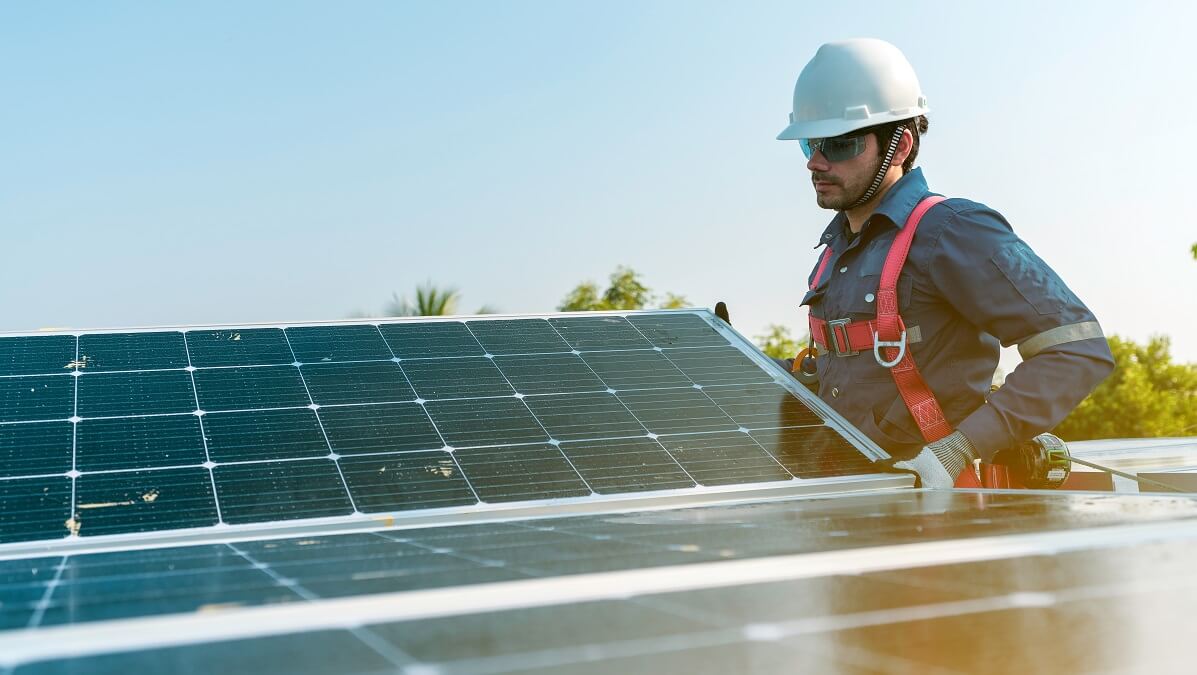There are a variety of reasons people consider solar power. Cheaper energy bills and environmental reasons are probably the main motivators, and probably further down the list is the feed-in tariff (FIT).
FITs are often a lowly consideration as they can be very confusing and vary depending on your retailer, state and distribution network.
So what are FITs?
In simple terms, FITs are credits you get for sending energy back into the grid from your solar system.
They were designed to encourage householders to adopt renewable energy.
They do not cover large-scale projects, but, as most domestic systems are between three and 10kW, that shouldn’t be an issue for most householders.
Compare Club utilities general manager Paul Coughran says retailers have tightened up their FITs in recent years.
Popular plans right now
Typical rates
“You’re looking at around the seven cents per kW mark depending on which state,” Mr Coughran says.
“There are solar plans available where you might get your FIT up to 11 or 12 cents but there’s typically a trade-off with your rates paid for consumption.”
Combined with the savings you’re making from the solar system, FITs can dramatically reduce your bills.
So how can you find the best FIT for you and your solar system?
According to industry export Solar Choice, a good rule of thumb is to avoid tariffs that seem too good to be true.
“Some retailers often heavily advertise high solar feed-in tariffs, hoping to draw in customers, only to charge high electricity purchase rates,” they advise.
“It’s best to shop around and focus on specific energy rates.”
The best electricity plan for solar owners has a balance of high feed-in tariffs, low usage tariffs and low daily charges.
Beware the trade-off
However, while many energy providers will offer attractive FITs, the trade-off is usually a higher daily rate or lower discount offers.
As a result, any savings you may be making on FITs could be cancelled out by the fact you’re paying more to import power from the grid. This is especially a concern for smaller systems. For example, those under 4kW. In such a situation, it’s worth shopping around for a deal with a lower daily supply rate.
For larger systems – for example 7kW or larger – you are probably generating a considerable amount of power and a deal with a high FIT may be a better fit for you.
To make it even more confusing, in Victoria there is the option of varying FIT rates depending on the time of day.
Solar is worth the most during afternoon ‘peak’ periods, when lots of households and businesses are using electricity; it is worth the least during ‘off peak’ periods when fewer people are using electricity.
Check list
So what should you consider when you are looking to find the most suitable supplier for the best FIT?
- Make sure you are clear on the FITs, the daily charge and other rates and discounts the supplier offers.
- Be aware that many suppliers may offer attractive introductory rates for a set period that may not be so attractive after the initial deal expires.
- Contact a comparison site, they can do all the hard work for you, including the the paperwork and the legwork to find a better deal. Have a past bill ready and be clear on what’s important to you, such as FITs or daily supply rates.
- If you have decided on a new supplier, ask your current retailer if it can match your new offer. It may save you the hassle of changing.
- Find out if there are any flexible payment options.
If you have installed a new solar system, FITs don’t just turn up on your bill, you will need to apply to your electricity retailer for the credits. Requirements may include proof the system was installed by a licensed professional and completing a solar connection form. Your meter may also need to be upgraded.
Do you have solar panels? Was the feed-in tariff important when you chose an energy supplier? Why not share your experience in the comments section below?
Also read: Explained: Solar hot water
Disclaimer: YourLifeChoices is part of Compare Club Media.


When we first had our solar panels in the early 2000,s the buyback rate was excellent(around 29c a unit). Now it is 2.25c off-peak up to 10c peak, and the price they charge is around 28c per unit. It is still worth having solar panels but it will take a long time to make it worthwhile.
why are you showing this
It is 3 /4 years old
I keep a detailed Excel spreadsheet of my power bills, and over the past 8 years the solar refund amount has decreased from around $213 a quarter, to around $50 a quarter. I have had panels cleaned, and my system checked twice – nothing wrong. No major changes have been made to my home or lifestyle. And it became decidedly worse after Origin replaced the switchboard.